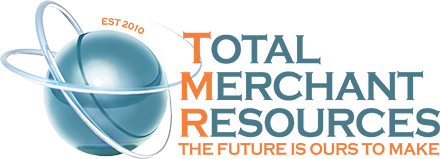
Leasing business equipment can be a smart move for many companies. It allows us to access the tools and machines we need without paying huge upfront costs. Instead of spending a lot of money on buying equipment, we can lease it and pay smaller amounts over time. This can help manage cash flow and keep our business running smoothly.
Understanding how equipment leasing works is important before we make any decisions. There are different types of leases, each with its own terms and conditions. Knowing the differences can help us choose the right lease that fits our business needs. Additionally, there are specific steps we need to follow to secure a lease, ensuring that the process is smooth and efficient.
Managing leased equipment is also crucial. Just because we’re leasing doesn’t mean we shouldn’t take care of the tools and machines we use. Proper maintenance and management can extend the life of the equipment and ensure we get the most value from our lease.
Understand the Basics of Equipment Leasing
Leasing equipment means borrowing it for a specific period instead of buying it outright. This can be useful for businesses that need expensive tools or machines but want to avoid large upfront costs. With leasing, we make regular payments to use the equipment over the lease term. Once the lease ends, there are options like renewing the lease, buying the equipment, or returning it.
Equipment leasing has several advantages. One big benefit is better cash flow management. We don’t need a huge amount of money to start using the equipment, which means we can use that money for other important business expenses. Leasing can also be tax deductible, helping to reduce our overall tax burden. Additionally, leasing often includes maintenance and support, which can keep our equipment in good working condition.
However, it’s important to read the lease agreement carefully. The agreement will detail the lease term, monthly payments, maintenance responsibilities, and end-of-lease options. Understanding these details helps us make informed decisions and avoid unexpected costs.
Types of Equipment Leases
There are several types of equipment leases available, each with different features and benefits. Knowing the types can help us choose the best fit for our business needs.
- Operating Lease: This is a short-term lease where we rent the equipment for a fraction of its useful life. Operating leases often include maintenance and support costs. They are suitable if we need the equipment for a specific project or a short period. At the end of the lease, we can return the equipment or renew the lease.
- Finance Lease: Also known as a capital lease, this is a long-term lease where we have the option to buy the equipment at the end of the term. Payments made during the lease count toward ownership. This type is suitable for essential equipment we plan to use for a long time.
- Truck Lease: If our business requires large vehicles like trucks, there are specialized leases for commercial vehicles. These leases might include maintenance and wear-and-tear costs, helping us keep the fleet in good condition.
- Sale and Leaseback: In this arrangement, we sell our equipment to a leasing company and then lease it back from them. This can free up capital while still allowing us to use the equipment. It’s a good option if we need immediate funds without disrupting business operations.
Selecting the right lease type depends on our business needs, the equipment’s usability, and our financial situation. Each type has its unique advantages, so it’s important to evaluate which best matches our needs.
Steps to Secure an Equipment Lease
Securing an equipment lease involves several important steps. Each step helps ensure that we get the best terms possible and that the leasing process goes smoothly.
- Assess Your Needs: First, determine the specific equipment you need. Consider the brand, model, and any special features required for your business operations. Knowing your exact needs helps in choosing the right leasing company and terms.
- Research Lenders: Look for lenders or leasing companies that specialize in your type of equipment. Compare their offers, terms, and conditions. Check reviews and ratings to ensure you’re dealing with a reputable company.
- Prepare Financial Documents: Leasing companies will often ask for financial statements, credit scores, and other documents that prove your business’s financial health. Gather these documents in advance to speed up the application process.
- Apply for the Lease: Complete the application forms required by the leasing company. Be honest and provide all necessary information to avoid delays or complications.
- Negotiate Terms: Once your application is approved, discuss the lease terms with the leasing company. Negotiate the monthly payments, lease duration, maintenance responsibilities, and end-of-lease options to suit your business needs.
- Review the Contract: Carefully read the lease agreement before signing. Ensure you understand all the clauses, fees, and responsibilities. If needed, consult a legal advisor to clarify any uncertainties.
Following these steps helps ensure that we secure a lease that meets our business needs and financial situation, making the leasing process smooth and beneficial.
Tips for Managing Leased Equipment
Managing leased equipment effectively is crucial for getting the most out of your lease. Proper management can save money and avoid potential problems. Here are some key tips:
- Regular Maintenance: Keep a schedule for regular maintenance and servicing of the leased equipment. This helps in keeping the equipment in good working condition and can prevent costly repairs.
- Track Usage: Monitor how and how often the leased equipment is being used. Keeping usage logs can help in maintaining the equipment and planning for future needs.
- Train Employees: Ensure that all employees who use the equipment are properly trained. Proper usage reduces the risk of damage and increases the equipment’s lifespan.
- Communicate with the Leasing Company: Stay in regular contact with the leasing company. Report any issues or damages immediately to avoid additional fees or penalties.
- Plan for the Lease End: Before the lease term ends, decide whether to buy the equipment, renew the lease, or return it. Planning ahead helps avoid last-minute decisions and ensures continuity in business operations.
By following these tips, you can manage your leased equipment efficiently, ensuring it serves your business well throughout the lease term.
Conclusion
Leasing business equipment is a practical option for many companies. It helps manage cash flow, access up-to-date technology, and keep operations running smoothly without the burden of high upfront costs. Understanding the basics of equipment leasing, knowing the types of leases available, following the steps to secure a lease, and managing the equipment effectively are all vital components of making the most out of leasing.
Making informed decisions about leasing can greatly benefit our business, ensuring that we have the necessary tools and machines to promote growth and efficiency. As with any financial decision, it’s important to assess our needs, evaluate our options, and manage our resources wisely.
If you’re ready to explore equipment leasing options and need expert guidance, Total Merchant Resources offers comprehensive merchant loan services to help you secure the equipment your business needs for success. Contact us today to learn more.



